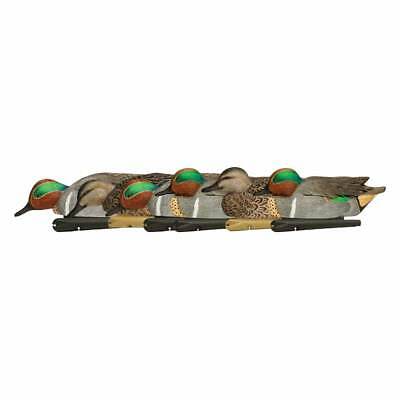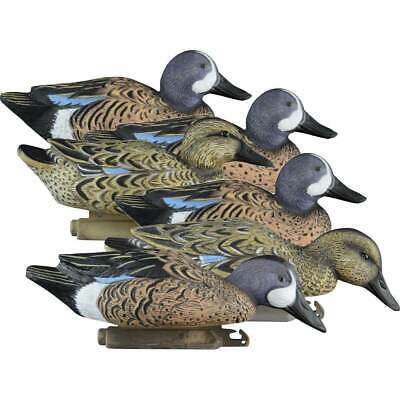-40%
Inflatable, Coyote, Decoy, predator, varmint, calls
$ 13.72
- Description
- Size Guide
Description
Predator PatrolFREE SHIPPING!
I
nflatable
D
ecoy Series
I D
Coyote
3 dimensional, life size, 22 mil PVC with photo transfer, 4 tie down grommets, multiple positioning rings, fits in a pocket, only weighs 8 ounces!
Starts out as 8" x 8" x 1" when deflated. Quickly Inflates to a life size, adult coyote. Heavy 22 mil PVC, has been tested at temps below freezing. Tie down grommets on each foot so that it can be anchored if necessary. Positioning rings allows you to position the coyote in various positions to suit your needs. Also may be used as a puppet for movement if your state allows. When the hunt is over, simply let the air out and pack it in a pocket!
Check out more ideas on our website preyonthepredator.com
History:
In the late 70's the rabbit distress call was as new as this inflatable puppet decoy is now. Back then the regulations were few to hunt coyotes and predators. The distress rabbit call was new and very effective. Thirty some years later we have too many regulations to keep track of and some very well educated coyotes.
The number of call makers is as numerous as breakfast cereal or potato chips.
I am always amazed at the variety of call designs being used.
It is a great feeling to watch some predator coming in to a call you are operating.
It is even a greater feeling when you put your skills and heart into a call or decoy that really brings in the predators.
I needed a decoy to be versatile in various states with changing weather conditions, whether in sage brush, grassy prairie, timbered meadows, mountainous canyons or even thick forest.
It needed to be life size and easy to carry and compact.
I have purchased all available on the market and have made numerous variations, none of which satisfied me.
ID Coyote:
This was the beginning of the Inflatable Coyote Decoy (ID Coyote).
It is made of 22 mil PVC.
Realistically this translates to being able to withstand blowing away in the sagebrush or blowing into a canyon.
It is puncture resistant.
For small holes common air mattress repair glue works well.
For larger holes like bullet holes ( I have come close with a shotgun) there are numerous vinyl repair kits with patches.
This decoy is designed with tabs on all four feet and three on the top and three on the underside.
The four on the feet are used mainly for staking it down.
The options and positions are as numerous as the scenarios and predators we hunt.
The purpose of this decoy is to take the attention off the caller/shooter.
How a predator responds to this decoy will depend on many things.
How you have set up the scene.
What type of calls you are using, mouth or remote.
It is like going fishing in water that has numerous species of fish.
You might get lucky to catch a variety of species with one bait or technique.
However to target one specie you will have greater success if you know what bait and how to present it, same with this decoy.
Knowing when to use a coyote vocalization or a distress sound will increase success.
Because its body language can be altered by inflating or deflating it along with the numerous puppet tabs, the mimicking abilities are up to the hunter’s imagination.
I have found that coyotes will expose themselves when they can put a visual with a sound.
They will usually try to get down wind.
When using a scent to match your scene will usually get the predator even closer.
Your stakes can vary greatly.
I use 6 inch nails with wire ties or a key ring drilled through just under the head of the nail.
A tent stakes works fine also.
If the ground is frozen then I use parachute cord around a rock, log or the bottom of a bush/small tree.
I will use a small closed face fishing reel with some type of fishing line that does not have any stretch to it.
I like a white braided Dacron 30-50 lb test, white because of the snow.
I will use the color of the tie down cord and the puppet action cord to match the scenario color.
This may sound difficult to some but then so did the open reed call when It was first introduced.
The more versatile something is the more practice it will take but the results will be well worth the time invested.
Ideas:
One simplest scenario to set the decoy in a sitting position by attaching the tab under the belly to the ground.
Now use various coyote vocalizations to match what you are trying to mimic.
Challenge call
or it may be mating season.
When the pups are out running loose there are numerous scenarios to mimic that are very effective.
If you prefer a simple rabbit distress then stake all four feet down.
Run a simple fishing line through the eyelet under the jaw.
Attach a rabbit hide to the fishing line.
Once in position you pull the line as you blow the call.
Since a rabbit is usually killed quickly only blow three or four bursts, then pull (bounce) the rabbit hide to mimic the coyote is eating a rabbit that just screamed.
One scenario I like a lot is staking the coyote down above dense cover.
Thread the fishing line through the decoy down to the edge of the thick cover.
Attach a wire tie approx. 2 feet above the ground.
Have your fishing line ran through the tie on the branch.
Position yourself where you have a good view of the area and a clear shot.
When you pull the line the coyote will move slightly and the bushes will move and the rabbit will bounce.
I suggest to use a hide of whatever prey is common for the targeted predator to feed on.
I suggest finding cover that has sign of activity.
I have laid the decoy on its side and staked the rear legs down and attached a line to pull the front off the ground.
This is mimicking a coyote in a trap.
Numerous predators will come for an easy meal.
This works better with colder weather.
When the pups begin to venture away from the dens I like to use the pup distress with one decoy on its side and one standing over the other chewing on it.
These are simple and effective scenarios.
I am anxiously waiting to see how others are using this simple, versatile and effective decoy

















